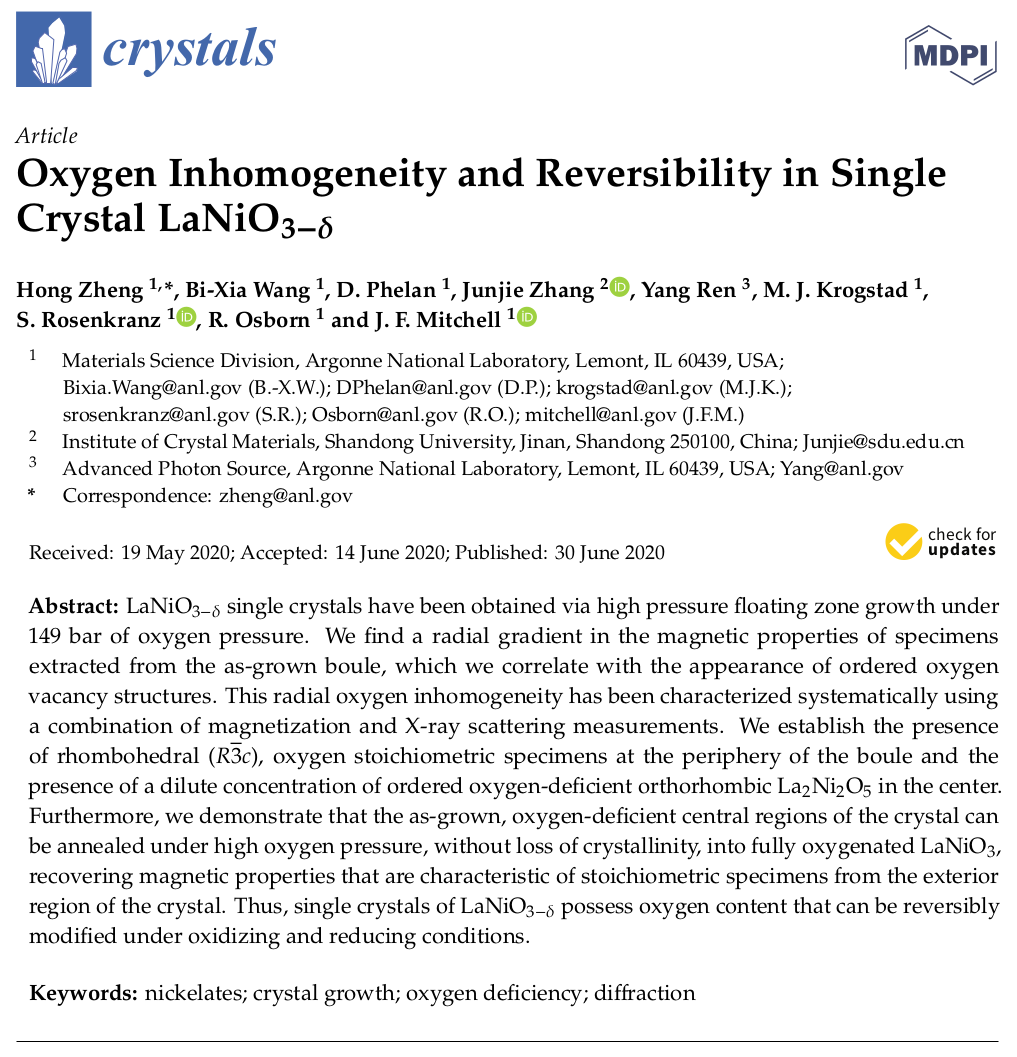While the mechanism of the insulator-metal transition in rare-earth perovskite nickelates is still under debate, LaNiO3 does not undergo this kind of transition und thus stands out as having particular importance in nickelate research. The floating zone crystal growth of LaNiO3−δ conducted by different research groups lead to very different conclusions from the observed features in magnetism and the question arose whether these features are intrinsic to stoichiometric LaNiO3 or an artifact of the incorporation of oxygen-deficient phases. So, the scientists of Argonne National Lab decided to further investigate the problem.
A single crystal of LaNiO3−δ was grown under 149 bar of pure oxygen using a ScIDre HKZ floating zone furnace. Specimens of the single crystal were characterised as-cast by their magnetic susceptibility, heat capacity and crystal structure and subsequently re-measured after being annealed under 150 bar of oxygen at 600 °C, conducted with a ScIDre A-HSO furnace. With this crucial step, the scientists could show that the magnetic and thermodynamic properties of single crystal LaNiO3−δ can be reversibly manipulated via annealing in reducing or oxidizing conditions that modify the nature and concentration of ordered oxygen vacancy phases. The oxygen stoichiometry is inhomogeneous in both axial and radial growth directions which influences the magnetic behaviour.






